Coaches must design practices that will challenge their players and help them develop specific skills in the shortest amount of time possible. You need to think of new and engaging ways to teach your players what they need to know and make sure they can execute it. This guide will show you exactly how to do that with soccer training drills, tips, and advice from some of the top trainers in the game today. If you are an experienced coach or looking to take your skills to the next level, this is a great resource for you!
What is Soccer Training?
Training is the process of developing your players’ skills. When you train, you’re making your players better! A soccer training drill is a specific practice activity that helps players develop their skills. Coaching is about learning from your experiences and finding new ways to make your players better. Every coach has different styles and ways of training.
Soccer training is a process that involves a lot of communication and feedback. There are many different ways to structure your training sessions and practice plans. You must find what works best for you and what your players respond to best.
Soccer Training, Why It's Important?
For players and coaches, training is the single most important part of the game. Training is where players learn the skills they need to play the game. Coaches use training to develop their players’ skills and put their team in the best position to win. If you’re a player, you need to make sure you’re in the right training environment. You need to find the right coach that will push you to be the best player you can be. You also need to discipline yourself off the field. It all starts with soccer training.
If you’re a coach, you need to use training to develop your players’ skills so they can play the game at the highest level. You need to challenge your players and put them in situations where they are forced to make decisions. That is how you continue to develop their soccer IQ.
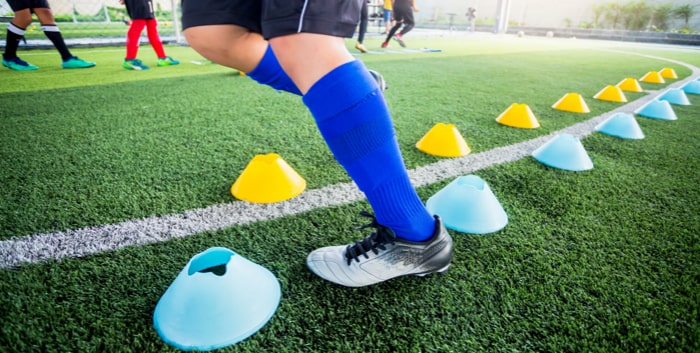
Soccer Drills for Fundamental Skills
Most coaches start their practice with a series of soccer drills to warm up and focus on the fundamentals of the game. These drills help players to improve their footwork, passing, receiving, shooting, and defending by doing it over and over again. When these drills are done as part of a warm-up routine they help to improve skill level, and increase the speed of play, and confidence in each player. The three basic building blocks of soccer are technique, tactical awareness, and physical ability. These are all things that drills can help to improve. Here are a few examples of drills that focus on improving fundamental skills:
- Footwork - There are many different footwork drills that coaches can do with their players. These focus on helping players to improve their first touch and quickness on the ball. By doing this, players can improve their ability in dribbling, passing, receiving, and shooting.
- Passing - Passing drills help players to develop the ability to pass the ball on the ground or through the air with accuracy, distance, and speed. These help players to complete passes to their teammates and keep possession of the ball.
- Receiving - Receiving skills are important for defenders and midfielders in particular as they are often the ones to receive passes from their teammates. Receiving skills can be trained by setting up a number of different receiving exercises.
- Shooting - Shooting is one of the more challenging soccer skills, and it is important for players to practice this regularly to improve their proficiency. Coaches can set up a number of shooting drills to help players to develop their proficiency in this area.
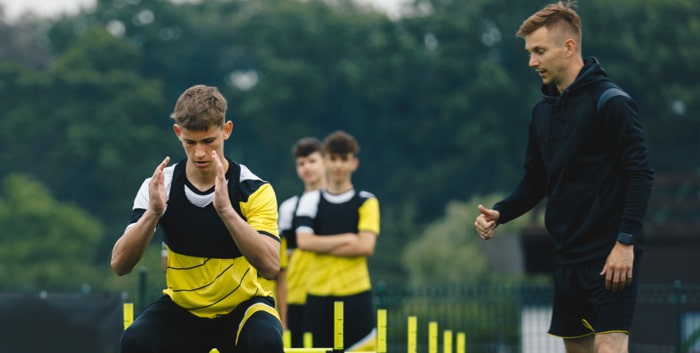
How to Plan a Soccer Practice?
As a coach, you want to keep a checklist of things you want to accomplish during a single soccer practice. You want to make sure you’re getting everything in and your players are improving. Here are a few guidelines to help you plan a soccer practice:
- Make a list of the skills your team needs to work on - You might have a checklist on your clipboard or have it written in a journal. You don’t have to have everything written down. It’s just important to have an idea of what you want to focus on in each practice.
- Make a list of the drills you want to use - You don’t have to have every single drill written down. Just have an idea of which drills you want to use and when you want to use them. Again, having this on a clipboard or on a journal is helpful.
- Break up the practice into segments - You want to create segments in your practice so it doesn’t drag on and your team is focused on each segment.
Developing Touch and Technique
Most people think the best soccer players are the fastest and strongest. But the best players are the ones who have great technique and are able to control the ball, even in bad weather conditions. That’s why the best thing you can do to develop your players’ touch and technique is to use smaller fields. Smaller fields allow your players to have to control the ball with fewer passes. You have to have your players use a smaller ball so they have to focus on controlling the ball with every touch.
To help players develop their touch and technique, even more, you can incorporate small-sided games into your soccer training. These games force your players to use fewer passes and focus on getting touches on the ball.
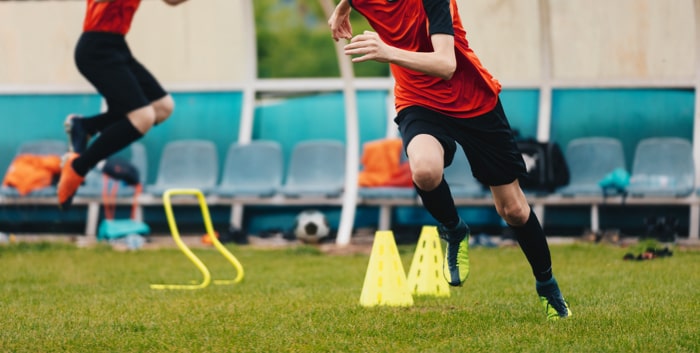
Developing Speed and Agility
Speed and agility are two very important parts of soccer, but they don’t always go hand in hand. You can have a player who is super fast, but they can’t change direction because they lack agility. To develop your players’ speed and agility, you want to use a variety of exercises. Choose soccer training drills that require your players to run and change direction. You can include agility drills in every practice and you can even do them as warm-up exercises. You don’t have to have a special agility day.
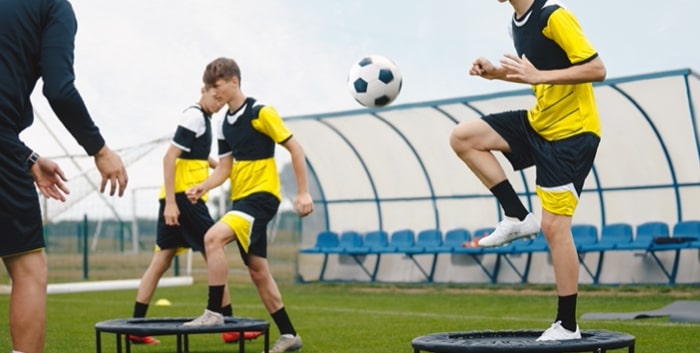
Developing Strength and Fitness
Soccer players don’t just need to focus on speed and agility. They also need to have strong muscles and be fit enough to play 90 minutes of soccer. To develop your players’ strength and fitness, you need to plan for it in every practice. When you create your practice plan, you want to include exercises that help your players build strength. You can use medicine balls, sandbags, or weighted sleds. You can include exercises like squats, lunges, push-ups, crunches, etc.
You want to make sure you’re challenging your players and making them work hard. When you plan for fitness, you want to include a lot of aerobic exercises that get your players’ heart rates up. Soccer is a high-intensity game and your players need to be fit enough to play 90 minutes.
Developing Game Awareness and Teamplay Skills
Game awareness and teamplay skills are important parts of the game that not all coaches focus on. Game awareness is being able to read the game and know what your players and opponents are doing on the field. It’s knowing where your team’s weaknesses are and how to correct them in real-time. To develop these skills, you want to play a lot of small-sided games. These games require your players to think quickly and make decisions. You also want to do a lot of tactical teamplay exercises. These are exercises that require your players to work together as a team.
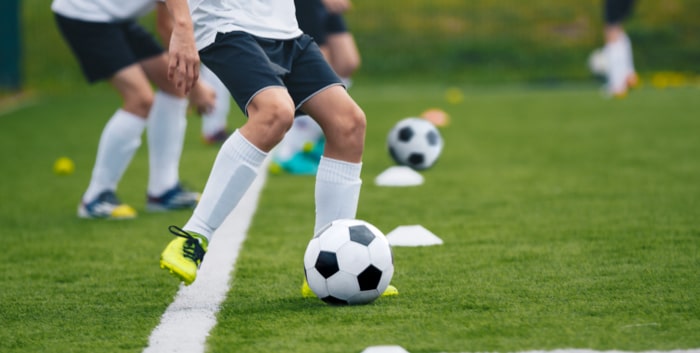
Bottom-Up Drills: Focus on Skill Development
Bottom-up drills focus on the fine details of soccer skills and critical soccer concepts. These drills help players to develop their skills by focusing primarily on themselves and building on previous skills. These drills are great for conditioning and for younger players who need extra repetition to get the concepts of the game. They can also be used to help players who are recovering from injury get their footwork, control, skill, and confidence back. These types of drills can focus on a particular soccer skill such as shooting or passing. They can also focus on a particular concept such as dribbling, receiving, or defending.
When designing bottom-up drills, be sure to focus on one particular skill or concept at a time. Then, move on to the next detail after the first one has been completed.
Bottom-Up Drill Variations
If you want to add some variety to your soccer sessions, you can do so by changing up your bottom-up drills. There are different ways that you can do this. You can change the order of the drills that you do, or you can change the way that you do the drills themselves. You can also change the number of reps that you do for each drill. For example, doing more reps for each drill allows you to complete more soccer practice drills during each practice session. This can be helpful if you have a hard time fitting everything that you want to do into your practice sessions.
Mixing in Game Situations During Practice
If you want your practices to be as close to a real game situation as possible, you can use game situations during practices. These can be anything from finishing drills to possession games and can be used at any point during your soccer practice. There are a few different types of game situations that you can incorporate into your practices. These include finishing drills, possession games, and transition games. Finishing drills are designed to help players score in a game-like situation. Possession games are designed to give players more time with the ball while in a game-like situation. Transition games are designed to simulate transitions between different game situations.
These game situations can be used at any point during your practice. This can help to keep the practices interesting and engaging for your players. It can also help them to get more reps in certain situations and help them to improve in those areas.
Final Coaching Tips
When designing your soccer practices, you want to make sure that you are challenging your players but also making sure that they are developing their skills and gaining valuable reps. This can be difficult at times, but it can be done with a little creativity and thought. One way that you can do this is by mixing in-game situations into your practices.


Improve Your GameJust 1.99 p/m
Exclusive drills and sessions, get involved today!
- 100’s of Drills
- Coach to Camera Videos
- Sessions from Pro’s
- Industry Leading Advice
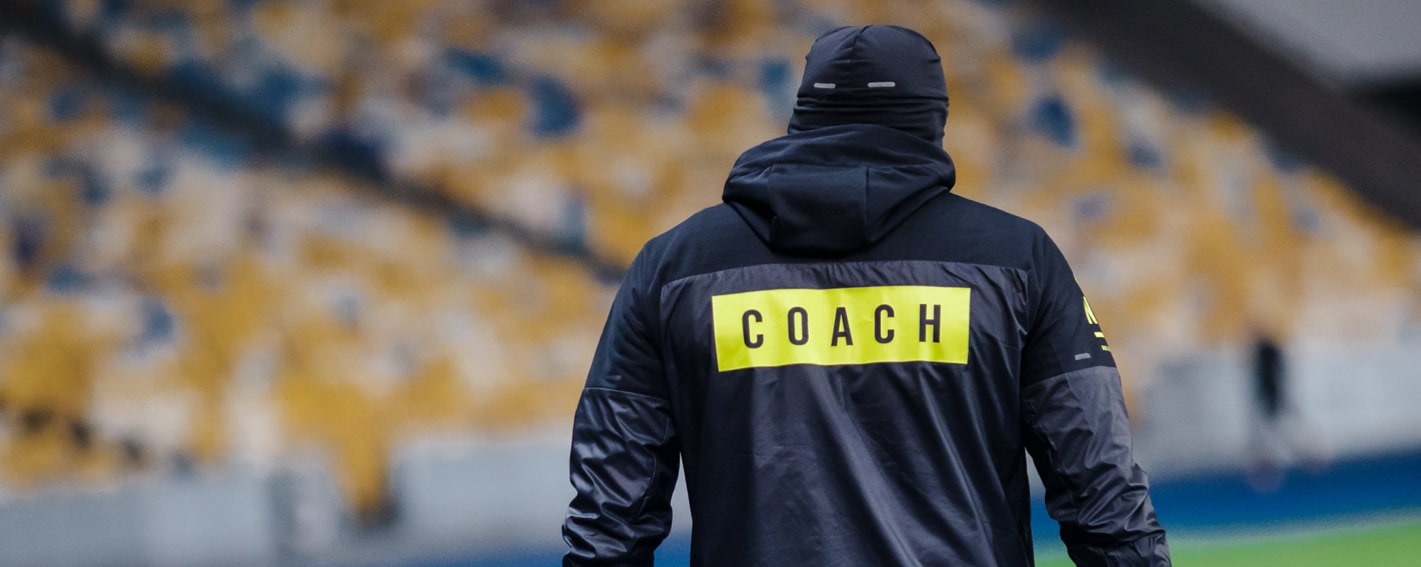
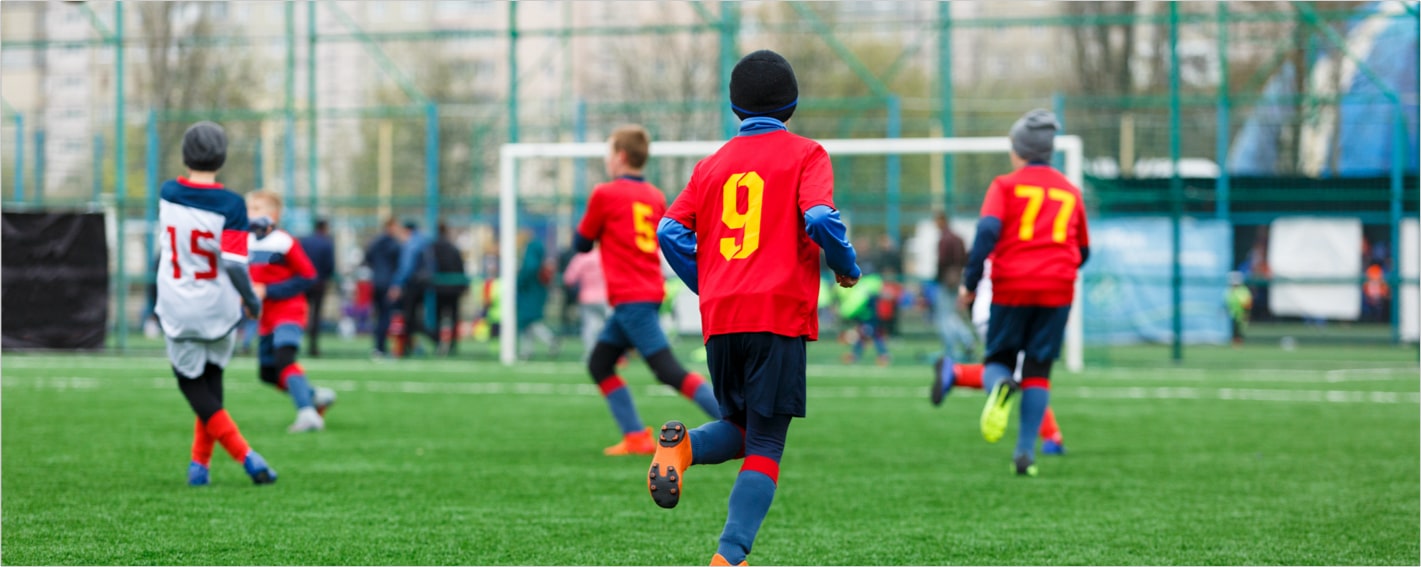
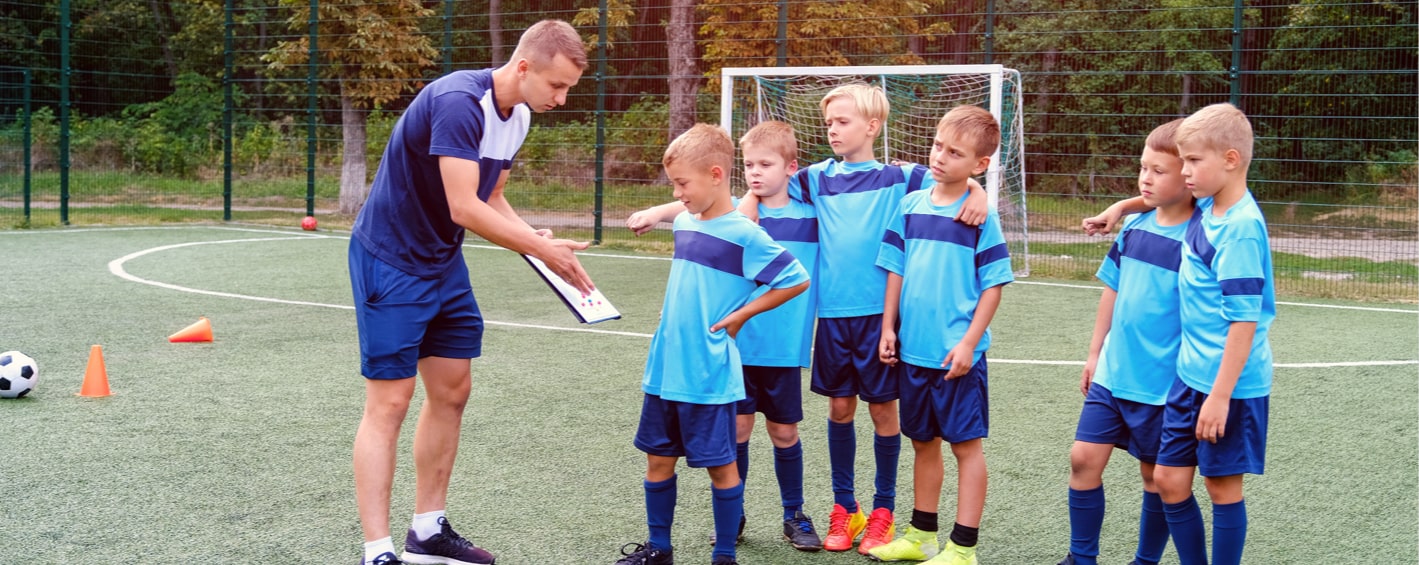
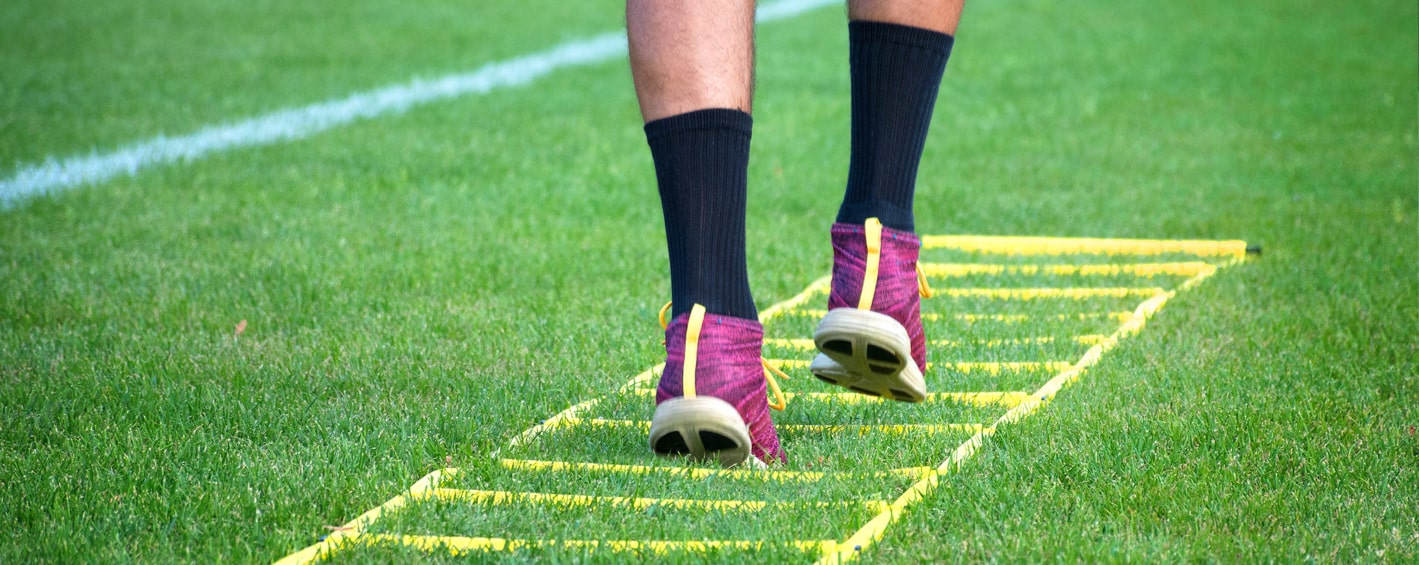
Cupello
Rethinking soccer coaching via our industry leading tools. Built to offer effective coaching development solutions for players and coaches of all levels.